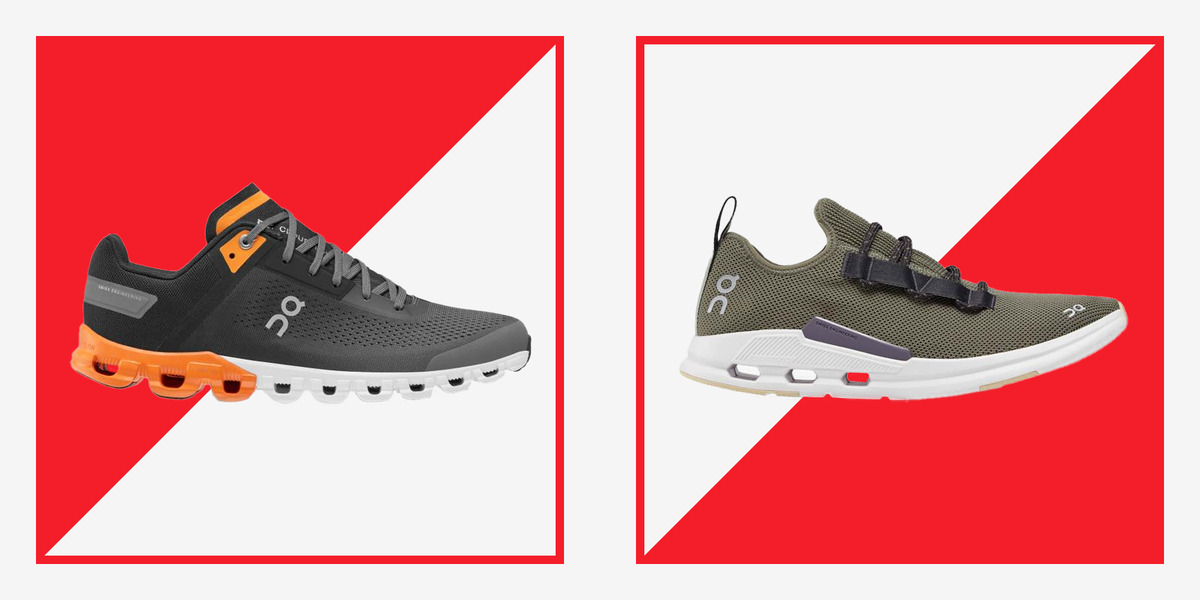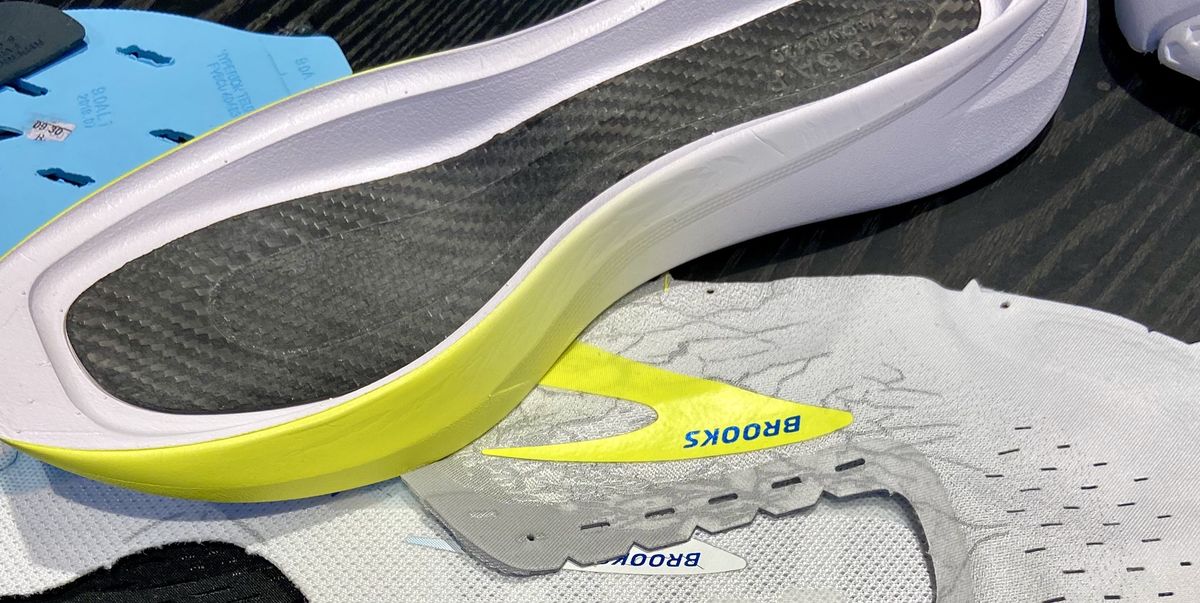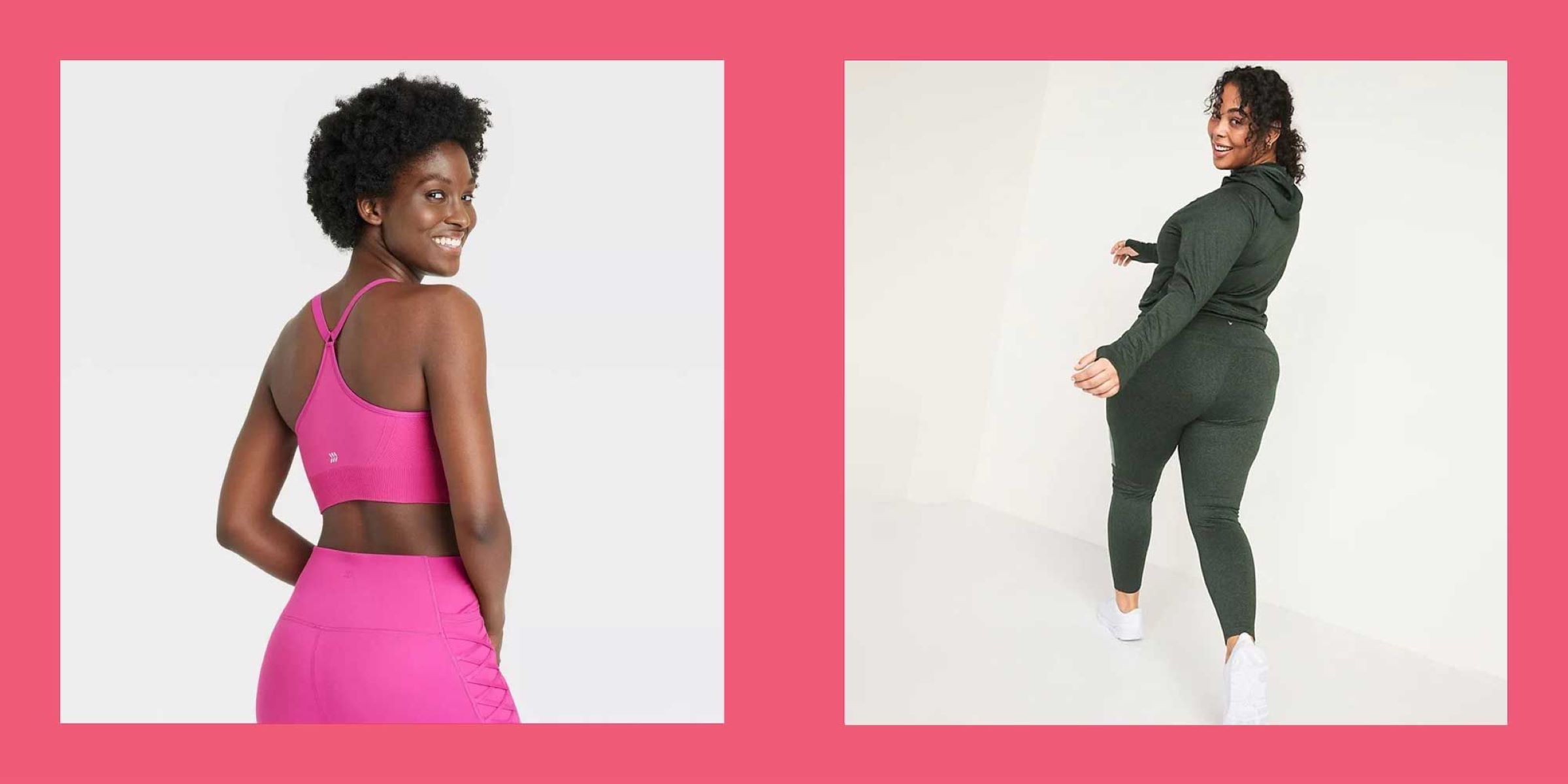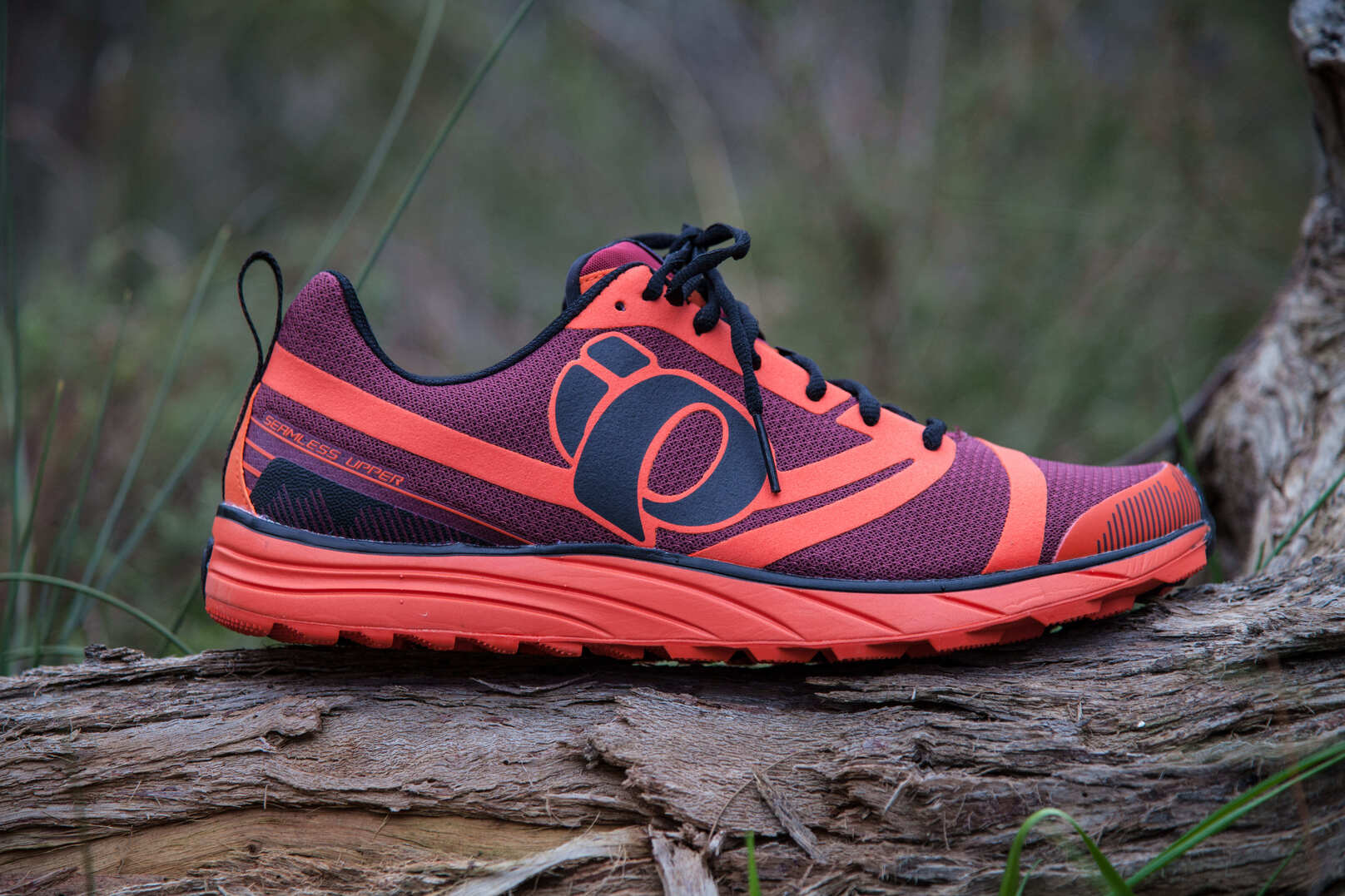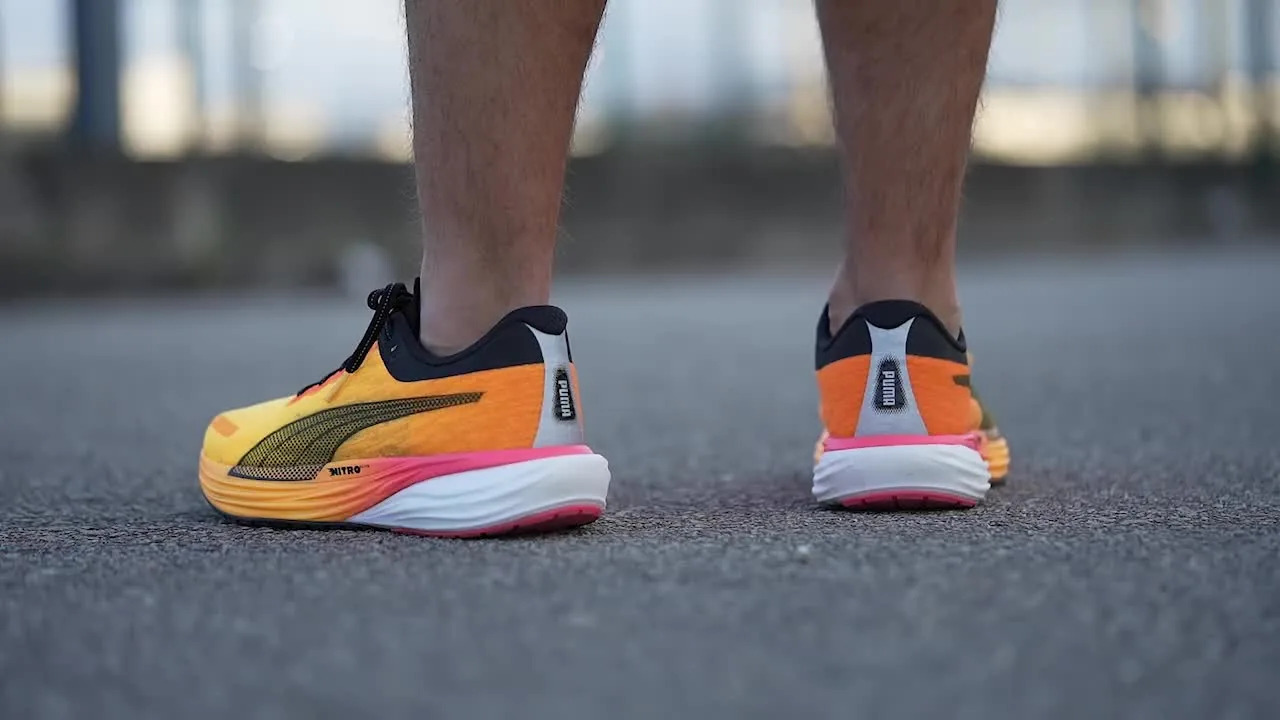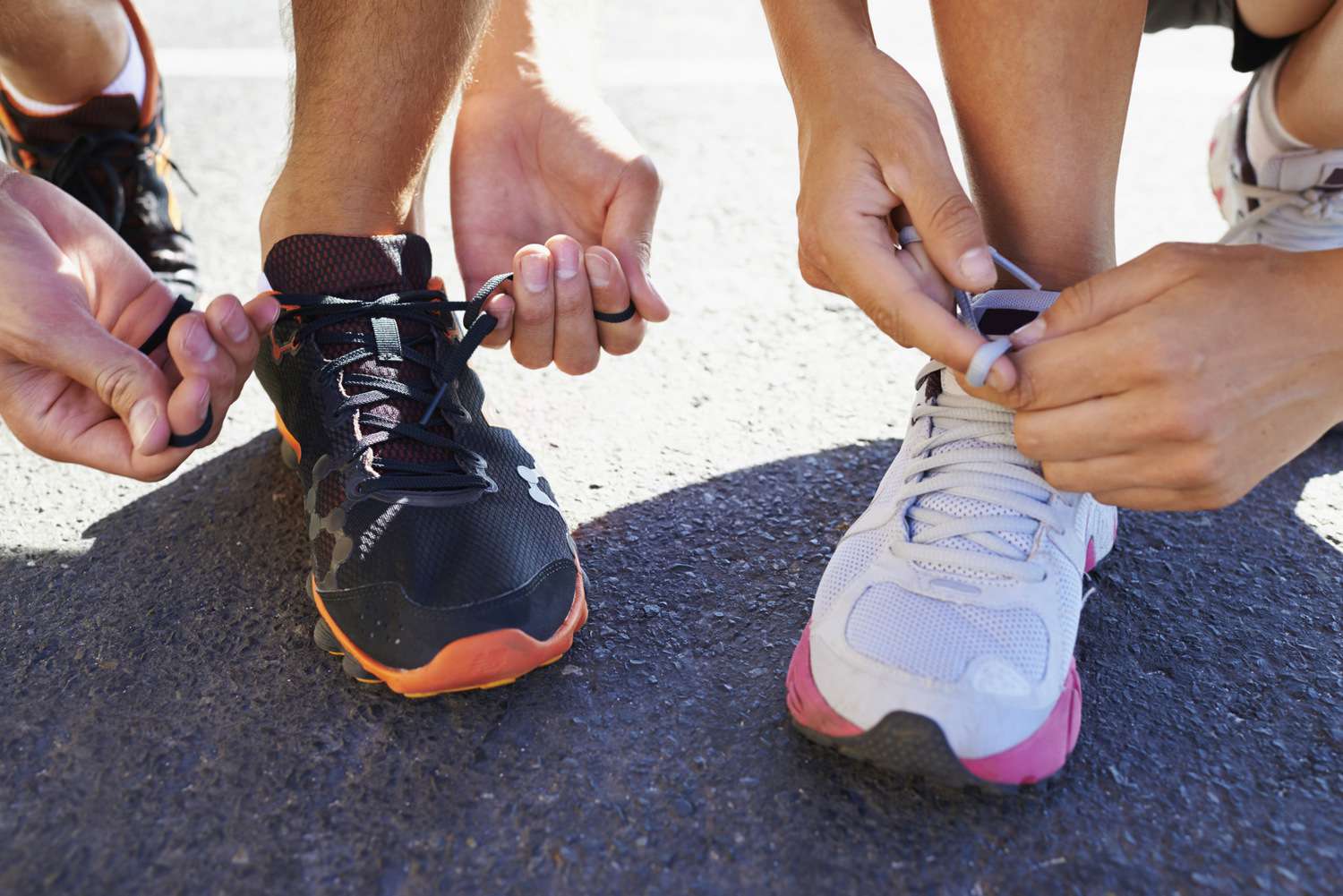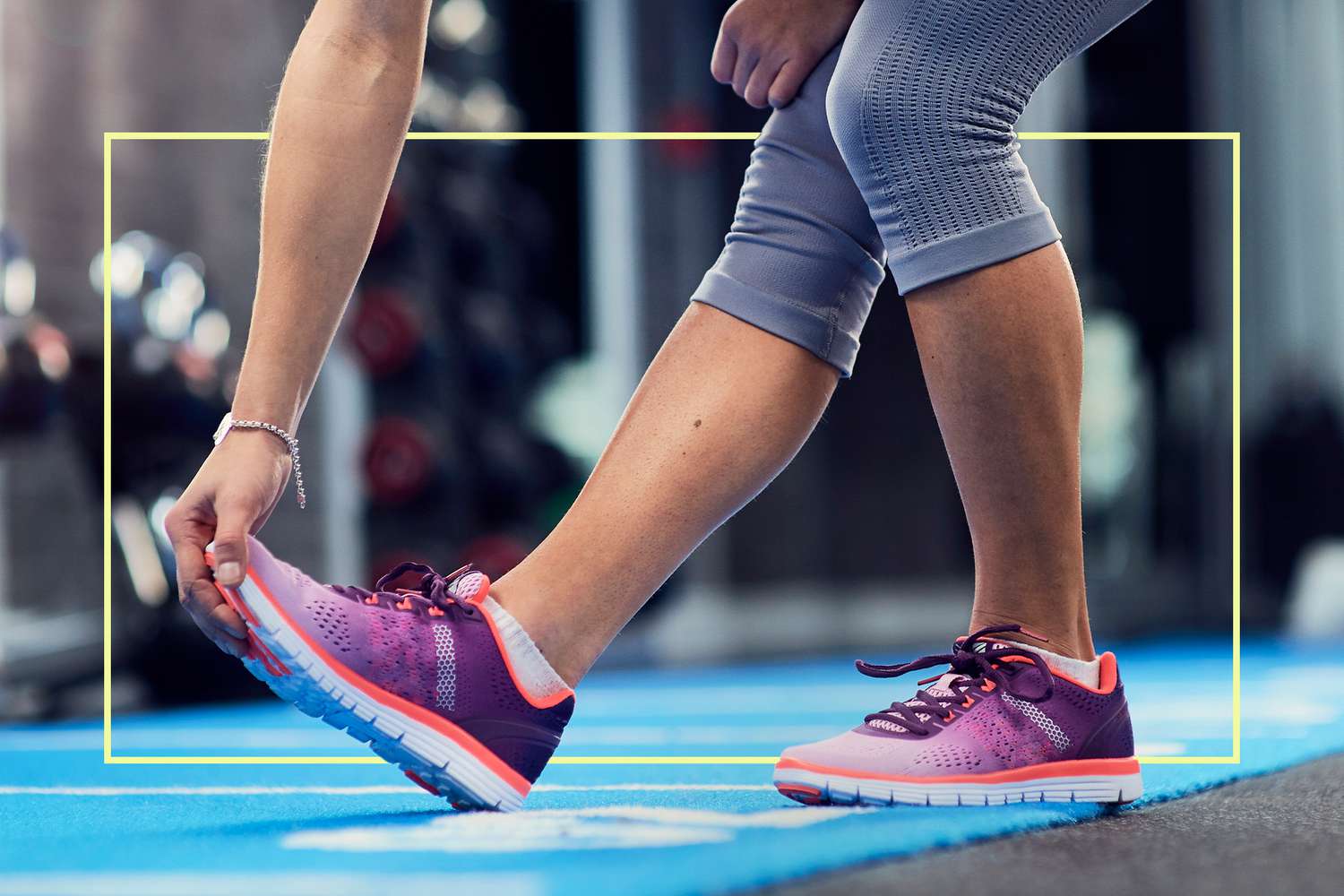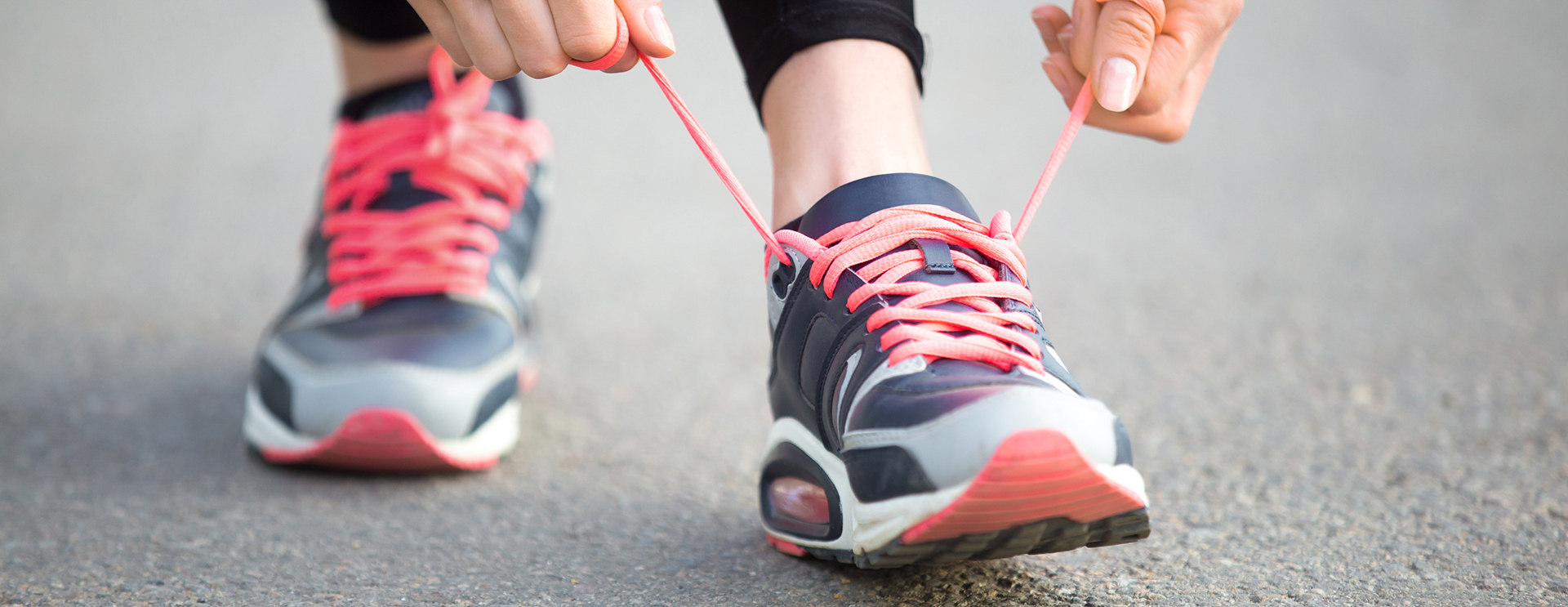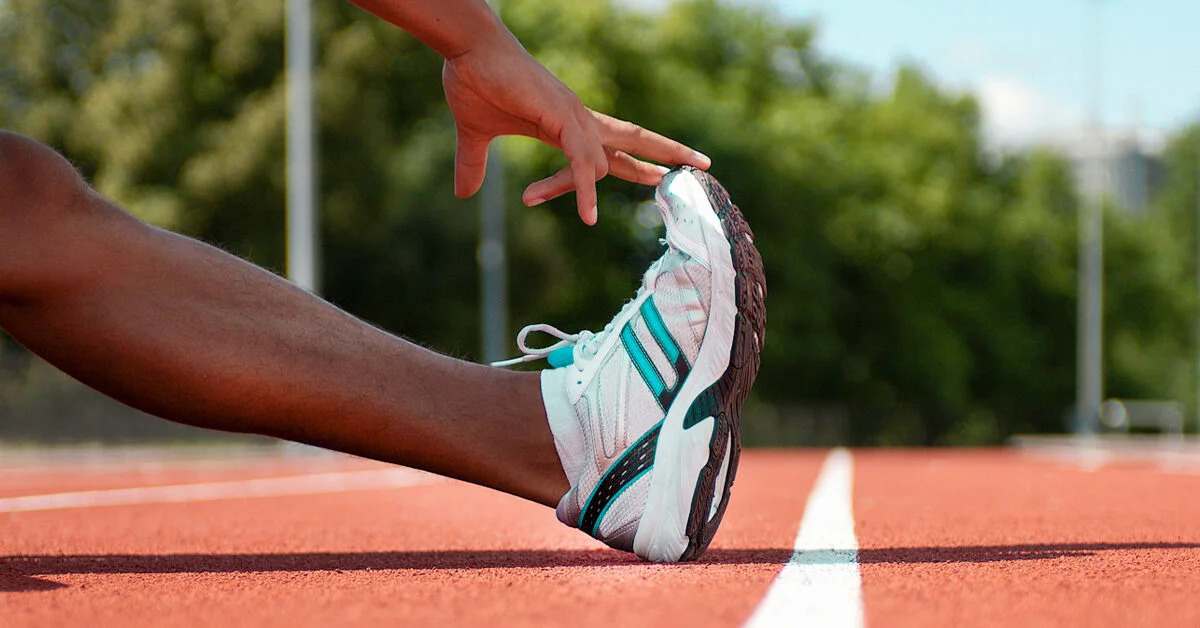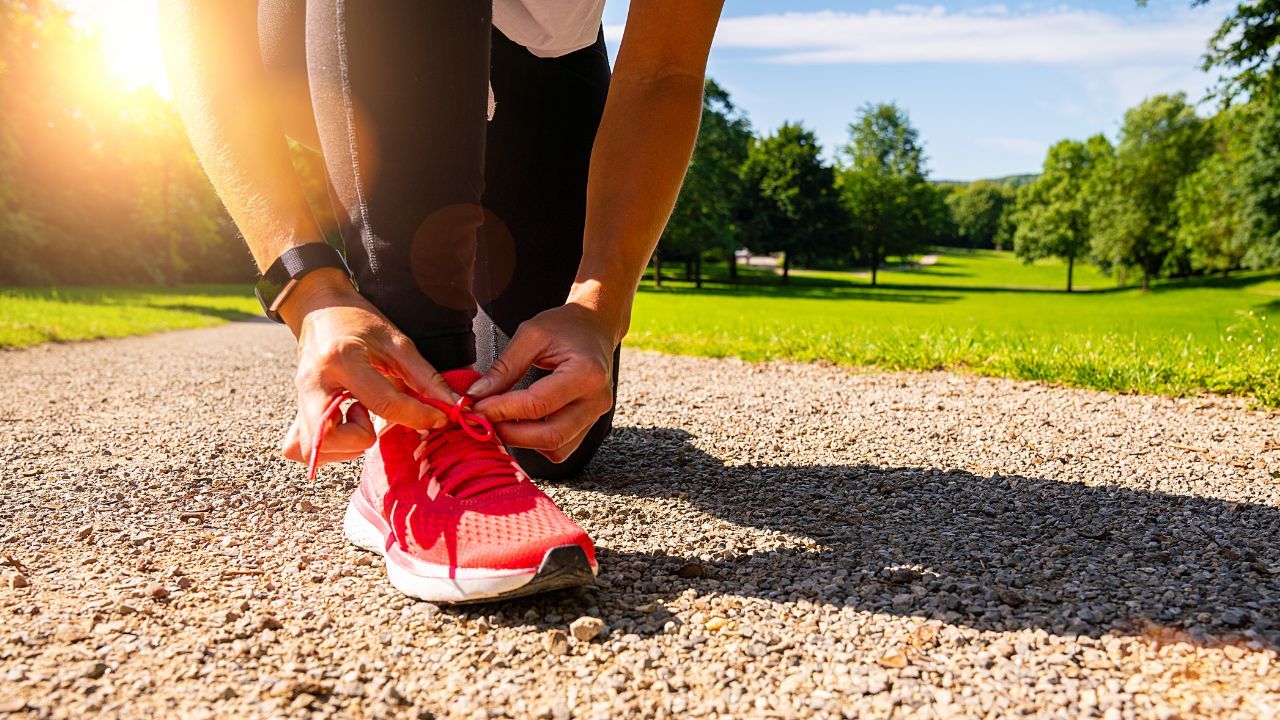

Featured
How Should Running Shoes Fit
Modified: January 22, 2024
Discover the perfect fit for your running shoes with our comprehensive guide. Find out how your shoes should fit to maximize comfort and performance. Featured advice and tips to ensure an ideal fit.
Introduction
When it comes to running, having the right pair of shoes is essential for both performance and injury prevention. However, it’s not just about finding a stylish or brand-name pair; the fit of your running shoes is equally important. Properly fitting shoes can make a significant difference in your running experience, providing comfort, support, and stability.
Many runners underestimate the importance of a proper shoe fit, often focusing solely on cushioning or style. However, wearing running shoes that don’t fit correctly can lead to a range of issues, including blisters, black toenails, calluses, and even musculoskeletal injuries.
Choosing the right size is just the starting point; various factors contribute to the fit of a running shoe. In this article, we will delve into the intricacies of finding the perfect fit for your running shoes, ensuring that you make an informed decision for your feet.
Whether you’re a seasoned runner or just starting your running journey, understanding how running shoes should fit is crucial. With the right fit, your feet will stay comfortable and well-supported, allowing you to focus on your running goals and enjoy every step of the way.
Importance of Proper Fit
Having a proper fit is of utmost importance when it comes to running shoes. It not only affects your comfort but also plays a significant role in your overall performance and injury prevention. Let’s take a closer look at why finding the right fit is so crucial:
Comfort: Running shoes that fit well provide a comfortable and enjoyable running experience. They should feel snug but not too tight, allowing for natural movement and preventing discomfort or pain during your runs. Shoes that don’t fit properly can cause rubbing, blisters, or hotspots, making your running experience miserable.
Support and Stability: A proper fit ensures that your feet and ankles are well-supported, reducing the risk of rolling, twisting, or other injuries. Running shoes with a secure fit around the heel and midfoot help to stabilize your foot during each stride. Adequate support and stability contribute to your overall running form, helping you maintain proper alignment and preventing excessive pronation or supination.
Prevention of Injuries: Ill-fitting shoes can lead to a range of foot problems and injuries. Shoes that are too tight can cause blisters, calluses, and toenail issues, while shoes that are too loose can result in foot fatigue, ankle sprains, or even stress fractures. By wearing shoes that fit properly, you reduce the risk of these common running injuries and keep your feet healthy and happy.
Optimal Performance: When your shoes fit well, you can achieve optimal performance during your runs. Properly fitting shoes facilitate a more efficient stride, allowing your feet to move naturally and propel you forward. With the right fit, you’ll have better control and responsiveness, enhancing your speed and endurance on the road or trail.
Longevity: Investing in shoes that fit properly can also prolong their lifespan. When shoes don’t fit well, the added stress and pressure placed on certain areas can lead to premature wear and tear, resulting in the need for replacement sooner. By choosing the right fit, you can ensure that your running shoes will last longer, saving you money in the long run.
Understanding the importance of a proper fit will help guide your decision-making process when selecting running shoes. Remember, finding the right fit is essential for comfort, support, injury prevention, and optimal performance. So, let’s dive into the various elements to consider when assessing the fit of your running shoes.
Length of the Shoe
The length of your running shoe is the most basic and fundamental aspect to consider when assessing fit. A shoe that is either too long or too short can lead to discomfort and a compromised running experience. Here are some key points to keep in mind regarding the length of your running shoes:
- Toe Space: When trying on running shoes, you should have about a thumbnail’s width of space between the end of your longest toe (typically the big toe) and the front of the shoe. This allows for proper toe splay during the running motion and prevents cramped toes or the possibility of toenail injuries.
- Verify the Fit: Stand up and make sure that there is enough space for your toes to wiggle freely. You should be able to move your toes without restriction. Additionally, when you walk and run, your toes should not feel cramped or pressed against the front of the shoe.
- Consider Foot Swelling: It’s important to account for foot swelling that occurs during longer runs or hot weather conditions. Your feet may expand slightly when running, so choosing a shoe that accommodates this swelling is recommended. If possible, try on running shoes in the late afternoon or evening when your feet are naturally slightly swollen to ensure a proper fit.
- Toe Bumping: If you notice your toes hitting the front or top of the shoe, it may indicate that the shoes are too short. This can lead to discomfort, numbness, and even blisters. Consider trying on a half or full size up to ensure adequate toe space.
- Heel Fit: While the focus is on toe space, it’s essential to ensure that the heel is snug and secure in the shoe without any slipping or rubbing. A properly fitting shoe should cradle the heel and provide a secure and stable fit.
Finding the right length for your running shoes is vital to ensure comfort, prevent toe-related injuries, and optimize your running performance. Remember, there should be ample toe space, no toe-bumping, and a secure fit around the heel. Now that we have covered the length, let’s move on to another critical element of shoe fit – the width.
Width of the Shoe
The width of your running shoes is just as important as the length when it comes to finding the perfect fit. Wearing shoes that are too narrow or too wide can lead to discomfort, pain, and even foot problems. Here’s what you need to know about the width of your running shoes:
- Foot Shape: Everyone’s feet are unique, and understanding your foot shape is essential in determining the appropriate shoe width. Some individuals have narrow feet, while others have wide or even extra-wide feet. It’s important to choose a shoe that aligns with your foot shape for optimal comfort and support.
- Arch Type: Your arch type can also influence the width of your shoes. Individuals with low arches or flat feet may require wider shoes to accommodate the natural splay of their feet. On the other hand, those with high arches may feel more comfortable in shoes that have a narrower midfoot and heel area.
- Toe Box Width: The toe box is the front portion of the shoe that surrounds your toes. It should provide enough room for your toes to spread naturally while running. If your toes feel cramped or squeezed together, the shoe may be too narrow. Conversely, if there is excessive space around your toes, the shoe may be too wide.
- Unwanted Pressure Points: When trying on running shoes, pay attention to any areas of pressure or discomfort. If you feel any squeezing or tightness across the width of your foot, it’s a sign that the shoes are too narrow. Conversely, if there is slippage or instability around the midfoot or heel, the shoe may be too wide.
- Consider Different Width Options: Many running shoe brands offer various width options to accommodate different foot shapes. Look for shoes labeled as narrow, regular/medium, wide, or extra-wide, depending on your needs. Trying different width options can help you find the perfect fit.
Ultimately, finding the right width for your running shoes is crucial for comfort, stability, and overall foot health. It’s essential to choose a width that allows for adequate toe splay, avoids pressure points, and provides a secure fit around the midfoot and heel. As we move forward, we will explore another significant aspect of shoe fit – the toe box space.
Toe Box Space
The toe box, or the area in the front of the shoe that surrounds your toes, plays a crucial role in providing comfort and preventing foot issues while running. Adequate toe box space is essential for maintaining proper foot alignment, preventing toe-related problems, and ensuring an overall comfortable fit. Consider the following points when evaluating the toe box space of your running shoes:
- Toe Splay: During running, your toes naturally spread out to help absorb impact and provide stability. A shoe with a narrow or constricting toe box can restrict this natural toe splay, leading to discomfort, irritation, and even deformities such as bunions. Look for shoes with a roomy toe box that allows your toes to move and splay comfortably.
- Toe Wiggle Room: When trying on running shoes, make sure there is enough space for your toes to wiggle freely. You should be able to move your toes without restrictions, whether it’s by wiggling or splaying them. Having adequate space in the toe box will prevent jamming or rubbing, decreasing the likelihood of blisters and other irritations.
- Vertical Height: In addition to horizontal space, consider the vertical space in the toe box. Your toes should not feel compressed or squished from the top. There should be enough vertical height to accommodate the natural shape and movement of your toes without any excessive pressure or discomfort.
- Avoid Overly Wide Toe Boxes: While a roomy toe box is important, be cautious of shoes with overly wide toe boxes. If the shoe feels excessively wide in the forefoot area, it may lead to instability or a floppy fit while running. Aim for a balance between space and a secure fit around the midfoot and heel.
- Movement within the Toe Box: During the fitting process, ensure that your toes have enough space to move comfortably within the toe box, but not too much that they slide around or feel unstable. Your toes should have a secure fit that prevents excess movement while still allowing for natural flexibility.
By prioritizing adequate toe box space in your running shoes, you can improve overall comfort, reduce the risk of toe-related issues, and enhance your running experience. Remember, the toe box should provide enough room for toe splay and movement while maintaining a secure fit. Next, let’s discuss another crucial aspect of shoe fit – the fit around the heel.
Heel Fit
The fit around the heel is a critical aspect to consider when evaluating the overall fit of your running shoes. A secure and stable heel fit is essential for proper foot alignment, preventing slippage, and maximizing comfort during your runs. Here are some key points to keep in mind regarding the fit around the heel:
- No Slippage: When you lace up your running shoes and stand up, your heel should feel snug and secure in the shoe. There should be no excessive movement or slippage, as this can lead to blisters, irritation, and a lack of stability while running.
- Heel Counter: The heel counter is the structure at the back of the shoe that helps provide stability and support to the heel. It should fit comfortably around your heel without digging or rubbing. A rigid heel counter can offer excellent stability, while a softer, more flexible one can provide a more customized fit.
- Avoid Overly Tight Fit: While a secure fit is important, it’s essential to avoid shoes that are overly tight around the heel. This can cause discomfort and potentially lead to Achilles tendonitis or other issues. Aim for a fit that allows for a little bit of movement, but not enough to cause slippage.
- Arch Support: The fit around the heel can influence the effectiveness of the shoe’s arch support. If the heel fit is too loose, the arch support may not align correctly with your foot, leading to inadequate support and potential discomfort. A secure heel fit ensures that the arch support functions optimally.
- Foam Padding or Collar: Some running shoes incorporate foam padding or a plush collar around the heel area to enhance comfort and reduce the risk of rubbing or irritation. Assess how these features feel against your heel to ensure a comfortable and irritation-free fit.
Remember that the fit around the heel should be snug, secure, and comfortable, without any slippage or excessive tightness. This ensures proper foot alignment, stability, and a comfortable running experience. With an understanding of the heel fit, let’s move on to another significant aspect of shoe fit – arch support.
Arch Support
Arch support plays a crucial role in running shoes, providing stability, comfort, and proper alignment for your feet. Understanding your arch type and finding the right level of support is essential for a well-fitted running shoe. Consider the following points when evaluating the arch support of your running shoes:
- Arch Types: There are generally three types of arches: low, neutral, and high. Knowing your arch type can help you determine the appropriate level of arch support. Low arches require more support to prevent overpronation, while high arches benefit from additional cushioning and shock absorption.
- Supportive Features: Running shoes may incorporate various features to provide arch support. This can include medial posts, arch bands, or thermoplastic devices to help stabilize the foot and promote proper alignment. Assess how the arch support feels against your foot and ensure it aligns with your specific arch needs.
- Comfort and Fit: The arch support should feel comfortable and supportive against your arches. It should not feel excessively high or cause discomfort. Additionally, ensure that the arch support fits well within the overall shoe, without causing pressure points or affecting the fit in other areas.
- Customization: Some running shoes offer customizable arch support, allowing you to adjust and fine-tune the level of support to match your specific needs. This can be particularly beneficial if you have unique arch requirements or if you prefer a personalized fit.
- Feel and Stability: When trying on running shoes, pay attention to how the arch support feels during walking or running. It should provide stability and prevent your arches from collapsing or overpronating excessively. The arch support should enhance your overall foot alignment and promote a more efficient stride.
Remember, finding the right level of arch support is crucial for a well-fitted running shoe. It should be comfortable, supportive, and tailored to your specific arch type. Understanding the arch support will help you find a shoe that enhances your running performance and prevents potential foot issues. Next, let’s explore the importance of midsole cushioning in running shoes.
Midsole Cushioning
The midsole cushioning of running shoes plays a vital role in providing comfort, shock absorption, and impact protection. It helps to minimize the stress and impact placed on your feet and lower limbs while running. Understanding the importance of midsole cushioning and finding the right level for your needs is crucial. Consider the following points when evaluating the midsole cushioning of your running shoes:
- Impact Absorption: The midsole cushioning absorbs the impact forces generated when your feet make contact with the ground while running. It helps to reduce the stress on your joints, muscles, and bones, minimizing the risk of injuries such as shin splints or stress fractures.
- Cushioning Level: The cushioning level can vary among different running shoe models. Some shoes offer a softer and more plush cushioning, while others provide a firmer and more responsive feel. Consider your preferences and running style when choosing the right level of cushioning for your needs.
- Footstrike pattern: Your footstrike pattern, whether it’s heel-striking, midfoot-striking, or forefoot-striking, can influence the amount and distribution of cushioning required. Different shoes are designed to cater to specific footstrike patterns, ensuring optimal cushioning and support throughout your run.
- Longevity of Cushioning: The durability of the midsole cushioning is another factor to consider. Some cushioning materials may compress and lose their responsiveness over time, leading to decreased shock absorption and comfort. Look for shoes with durable cushioning materials that will maintain their performance over many miles.
- Personal Preference: It’s essential to find a balance between cushioning and responsiveness based on your personal preferences. Some runners prefer a softer, more cushioned feel for long-distance runs or added comfort, while others prefer a firmer and more responsive feel for speed workouts or a closer connection to the ground.
Remember, the midsole cushioning of your running shoes plays a crucial role in providing comfort, impact absorption, and protection while running. Finding the right level of cushioning can help enhance your running experience, prevent injuries, and provide the support you need. Now, let’s move on to discussing the upper structure of running shoes.
Upper Structure
The upper structure of running shoes refers to the materials, construction, and design elements of the shoe’s upper portion. It is responsible for providing a secure fit, breathability, and protection for your feet while running. Understanding the key aspects of the upper structure can help you find a running shoe that meets your needs. Consider the following points when evaluating the upper structure of your running shoes:
- Materials: The materials used in the upper can vary, including mesh, synthetic fabrics, or even knitted materials. The choice of materials can affect breathability, flexibility, and durability. Look for breathable materials that can help keep your feet cool and dry during your runs.
- Fit and Support: The upper structure should provide a secure and supportive fit around your foot. It should hold your foot in place without constriction or excessive movement. Look for features such as overlays, support panels, or a well-designed lacing system that can enhance the overall fit and support of the shoe.
- Toe Protection: The upper structure should offer adequate protection for your toes. This can include features like reinforced toe caps or bumper materials. Toe protection helps safeguard against potential hazards such as rocks, roots, or accidental impacts during your runs.
- Breathability: Running shoes with breathable uppers allow air to circulate around your feet, which helps regulate temperature and moisture. This is especially important during longer runs or in warmer weather conditions. Look for shoes with mesh or perforations in the upper to enhance breathability.
- Flexibility: The upper structure should provide sufficient flexibility to allow for natural foot movement while running. It should allow your foot to flex and bend comfortably without feeling restricted. A flexible upper can enhance the overall running experience and promote a more efficient stride.
- Weight: The weight of the upper can impact the overall feel and performance of the shoe. Lighter weight materials can contribute to a more responsive and agile running experience. However, it’s important to find a balance between weight and durability, as excessively lightweight materials may sacrifice longevity.
Understanding the key elements of the upper structure can help you find a running shoe that offers a snug and supportive fit, breathability, and adequate protection. Each runner may have different preferences when it comes to the upper structure, so consider what features are most important to you. With the knowledge of the upper structure, let’s move on to discussing lacing techniques for running shoes.
Lacing Techniques
Lacing techniques play a significant role in achieving a customized and secure fit for your running shoes. Proper lacing can help alleviate pressure points, improve comfort, and enhance overall foot stability while running. Consider the following lacing techniques to optimize the fit of your running shoes:
- Standard Crisscross Lacing: The most common lacing technique involves a crisscross pattern that evenly distributes tension across the shoe’s upper. This method provides a secure fit and helps prevent slippage during running. Adjust the tightness according to your comfort preference, ensuring you have enough room for toe splay.
- Heel Lock Lacing: Heel lock lacing is particularly useful for individuals with narrow heels or those experiencing heel slippage. This technique involves creating an additional loop around the ankle to secure the heel in place. It provides extra stability and prevents unnecessary movement within the shoe.
- Gap Lacing: Gap lacing is beneficial for individuals with wider forefeet or those who experience pressure points on the top of the foot. This technique involves skipping a lace hole or two in the middle of the foot to create more space and alleviate pressure. It allows for a customized fit without compromising overall foot security.
- Runner’s Loop Lacing: The runner’s loop lacing technique can help relieve pressure on the top of the foot and secure the midfoot. To do this, create a loop with the lace near the top eyelets, and then thread the laces through these loops before tying. This technique reduces tension and enhances comfort in the midfoot area.
- Lock Lacing: Lock lacing is an effective technique for preventing foot slippage and ensuring a secure fit throughout your run. It involves creating a loop on each side of the shoe and crossing the laces through these loops before tying them. This creates a “lock” that prevents the laces from loosening or slipping during activity.
Experiment with different lacing techniques to find the one that provides the best fit and comfort for your feet. It’s important to note that the right lacing technique may vary from person to person, depending on individual foot anatomy and preferences. By utilizing these techniques, you can achieve a more secure and customized fit, maximizing the benefits of your running shoes.
Trying on Running Shoes
Trying on running shoes is a crucial step in finding the perfect fit and ensuring optimal comfort and performance. Here are some tips to consider when trying on running shoes:
- Shop in the Afternoon: Your feet tend to swell throughout the day, so it’s best to try on running shoes in the afternoon or evening when your feet are at their largest. This can help ensure a better fit when your feet are naturally slightly swollen.
- Bring Your Running Socks: Wear the socks you typically use while running when trying on shoes. This will give you a more accurate representation of how the shoes will fit during your runs.
- Try Both Shoes: Don’t just try on one shoe; make sure to try on both shoes and walk around in them to assess the fit and comfort. Your feet may have slight differences in size or shape, so it’s important to evaluate both shoes individually.
- Stand Up and Move Around: Take the time to stand up and walk or jog around the store to assess how the shoes feel while in motion. Pay attention to any areas of discomfort, rubbing, or instability.
- Consider Orthotic Inserts: If you wear custom orthotics or prefer additional arch support, bring them along and try them in the shoes to ensure they fit comfortably together. This is particularly important if you have specific foot concerns or conditions that require additional support.
- Don’t Rush: Take your time when trying on running shoes. Walk, jog, or even run in the store if allowed to get a better feel for the shoes. Don’t feel shy about spending quality time in each pair to ensure they truly meet your needs.
- Ask for Expert Advice: If you’re unsure about the fit or need guidance, don’t hesitate to seek assistance from knowledgeable store staff or experts. They can offer recommendations based on your running style and foot type.
Remember, finding the right running shoes involves more than just choosing the right size. Trying on multiple pairs, evaluating the fit, and considering factors such as comfort, support, and personal preferences are essential. With these tips, you can make an informed decision and find the perfect pair of running shoes that will support you on your running journey.
Conclusion
Finding the perfect fit for your running shoes is paramount to optimizing comfort, support, and performance. Paying attention to the length, width, toe box space, heel fit, arch support, midsole cushioning, upper structure, lacing techniques, and trying on the shoes are all essential steps in achieving a well-fitted pair of running shoes. Each of these elements contributes to the overall feel, functionality, and protection of your feet.
Remember, when it comes to the length, ensure there is adequate space at the front of the shoe for proper toe splay. Consider the width to provide a comfortable fit, avoiding cramped toes or excessive movement. Evaluate the toe box space to allow for natural toe splay and wiggle room. The heel fit should be snug without slippage, providing stability during your runs. Select the right level of arch support based on your foot type and preferences.
Give attention to the midsole cushioning for impact absorption and comfort. Assess the upper structure for a secure fit, breathability, and toe protection. Explore various lacing techniques to customize the fit and increase comfort. And make sure to try on the running shoes properly, considering foot swelling and wearing your running socks, to ensure a more accurate assessment.
By taking the time to find the right fit, you can enhance your running experience, prevent discomfort and injuries, and improve your overall performance. Remember that everyone’s feet are unique, so what works for one person may not work for another. Trust your instincts and choose the running shoes that feel the best for your feet.
So, lace up your newly fitted running shoes and hit the road or trail with confidence, knowing that you have taken the necessary steps to find the perfect fit. Happy running!
